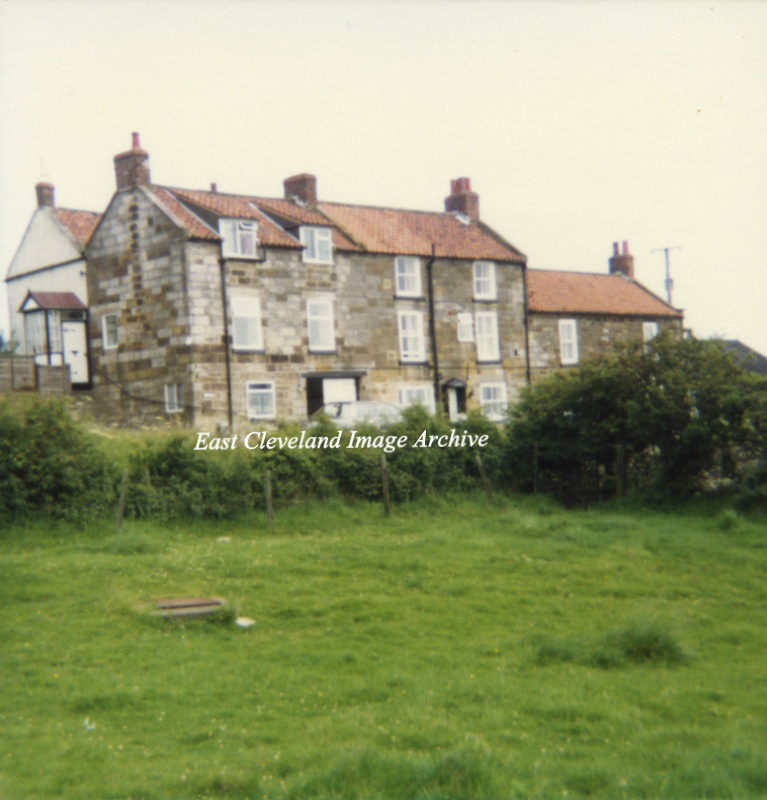
Close to Robin Hoods Bay; Raw evokes an image of a cold and unwelcoming placed. How unlike the delightful hamlet it actually is!
Image courtesy of Joy e Dobson and Keith Bowers.
|
|
||
 Close to Robin Hoods Bay; Raw evokes an image of a cold and unwelcoming placed. How unlike the delightful hamlet it actually is! Image courtesy of Joy e Dobson and Keith Bowers. 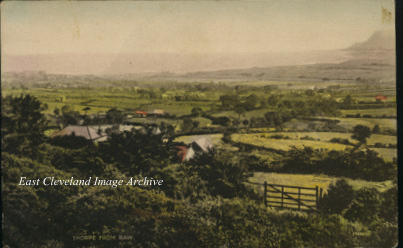 The hamlet of Thorpe, looking towards Ravenscar. Image courtesy of of Joyce Dobson and Keith Bowers. 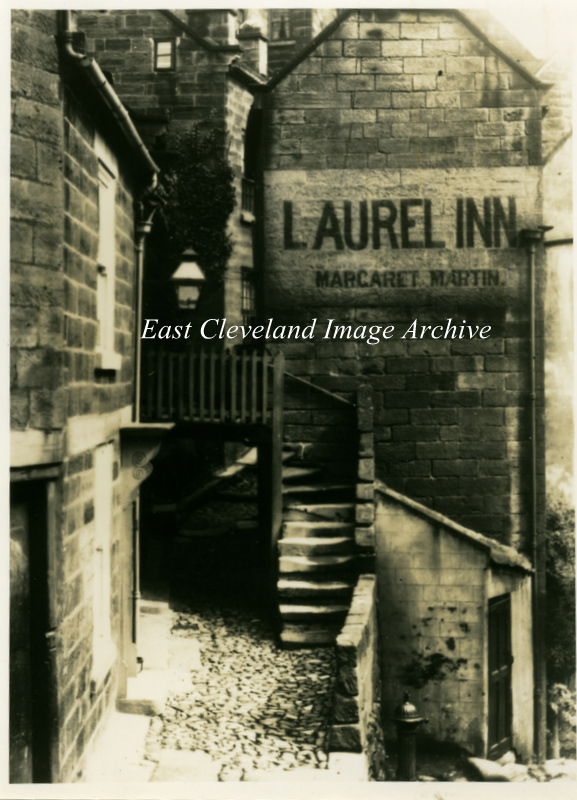 The Laurel Inn at Robin hoods bay, Does anyone know at what date Margaret Martin held the licence? Nicolas Jenni has advised: ”I have a watercolour painting of this view, dated 1894, and the licensee is shown as John Martin”. Further researches have now shown that John Martin was licensee until his death in 1899, Margaret Martin then became licensee and died in 1915. Image courtesy of Joyce Dobson and Keith Bowers, many thanks to Nicolas Jenni for the update. 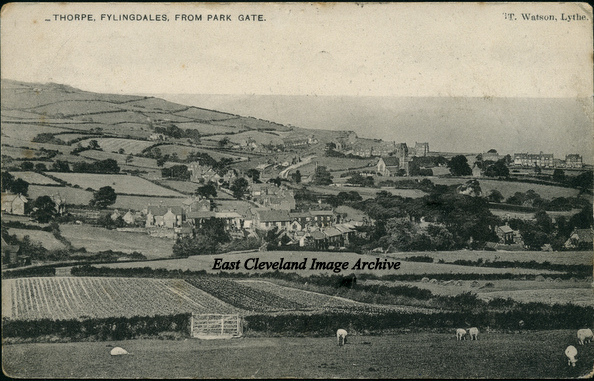 The hamlet of Thorpe with Robin Hoods Bay towards the sea; from a Tom Watson of Lythe postcard. Image courtesy of Joyce Dobson and Keith Bowers. 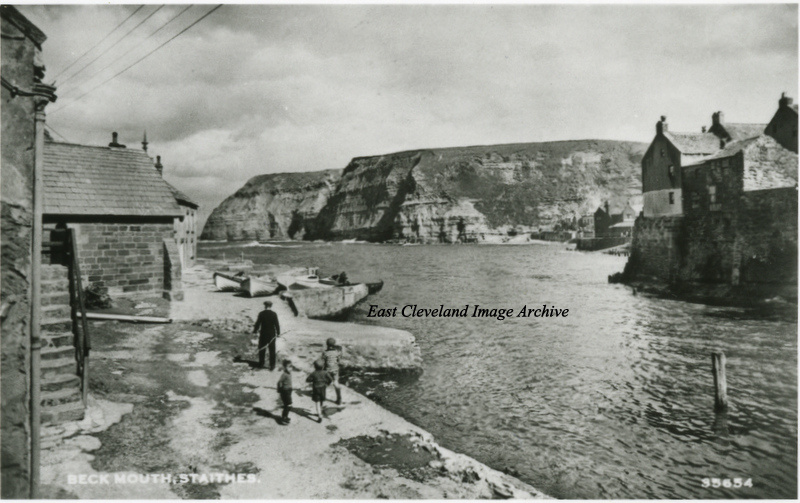 A different angle on our many photographs of Staithes. Taken from the Cowbar side of the beck. Image courtesy of Joyce Dobson and Keith Bowers. 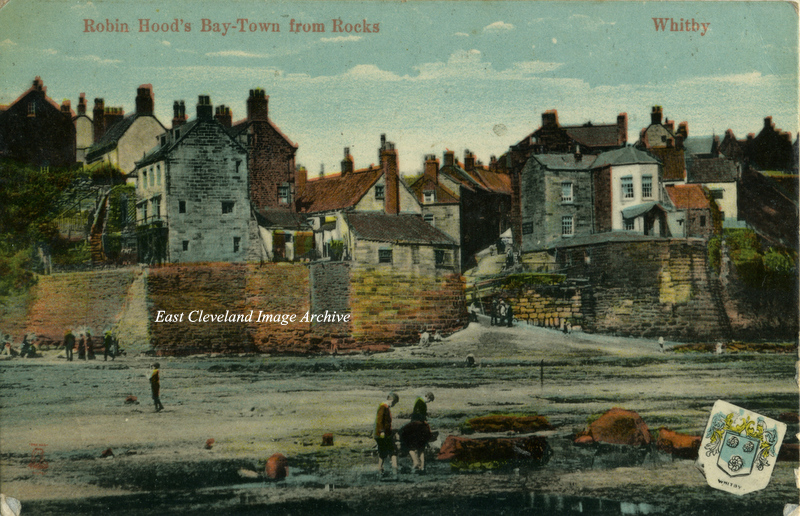 A delightful hand tinted postcard view of “Bay Town”, interesting is the Whitby coat of arms in the bottom right hand corner. Image courtesy of Joyce Dobson and Keith Bowers. 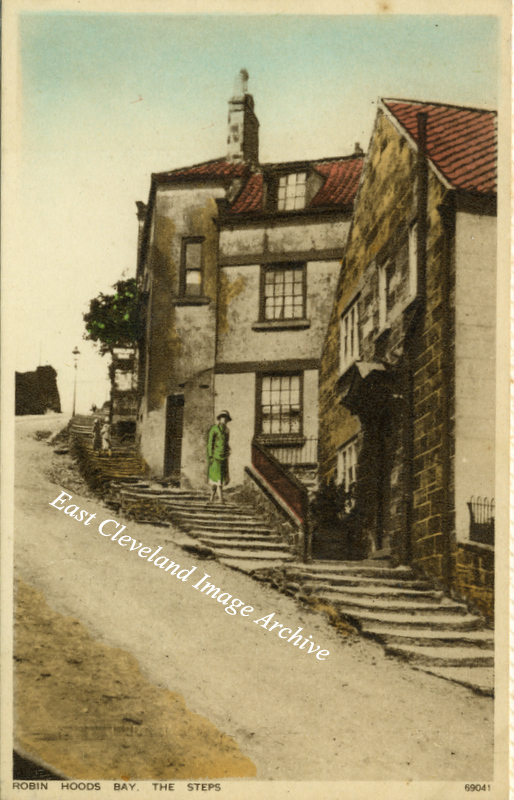 A postcard view of the road and steps up out of Robin Hoods Bay, possibly from the 1930s based on the ladies clothing. How quiet and no vehicles attempting the perilous descent or ascent. Image courtesy of Joyce Dobson and Keith Bowers. 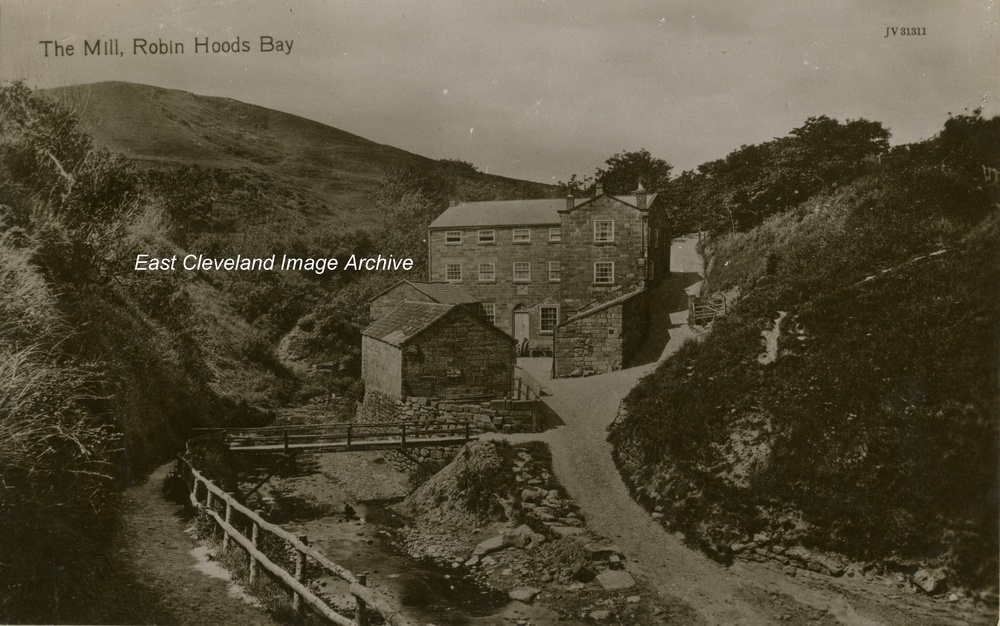 A post card view of the Mill at Robin Hoods Bay. The building is slightly further south of Robin Hoods Bay and can still be viewed by walkers on the now popular Cleveland Way. Image courtesy of Joyce Dobson and Keith Bowers. 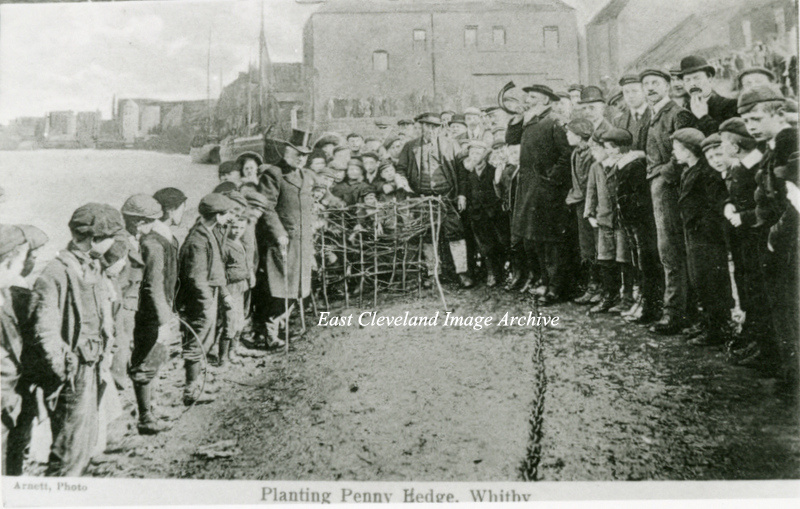 A custom dating back to the reign of King Henry II; the legend says a group of noblemen were hunting wild boar in Eskdale, and slew a hermit who tried to protect the animal. The Bishop of Whitby Abbey as a penance ordered them to construct on Ascension Eve each year a hedge of wood with a penny knife to withstand three tides. Completion of the hedge was announced by blowing a horn as seen in the postcard image. Image courtesy of Joyce Dobson & Keith Bowers.  East Row road bridge was obviously demolished by serious flooding 20th May 1910. The present day road bridge continues to be a problem for modern road traffic, despite the addition of an adjacent footbridge. The modern weather conditions have obviously been experienced before, as our image clearly shows. Richard Fox has advised the Archive; the Whitby Gazette on 24th May 2010 to comemmorate this event presented the original commentary to a photograph of the disaster: “A severe storm on 20 May 1910 reduced the East Row Bridge to rubble as the beck became a raging torrent that tore up trees from Mulgrave Woods and hurled them into a bridge. East Row Bridge was built from 1778-1780 to a design by John Carr. Some commentators have suggested the pillars were undermined by the spate but it was the large amount of wood that effectively blocked the arches and caused a dam behind the bridge that caused it to break. It was this blocking of the small arches that prompted the design of a single arch that could not be blocked by tree debris. The previous wooden bridge at East Row was dismantled in 1777 and moved to Raithwaite”.
|
||
Recent Comments